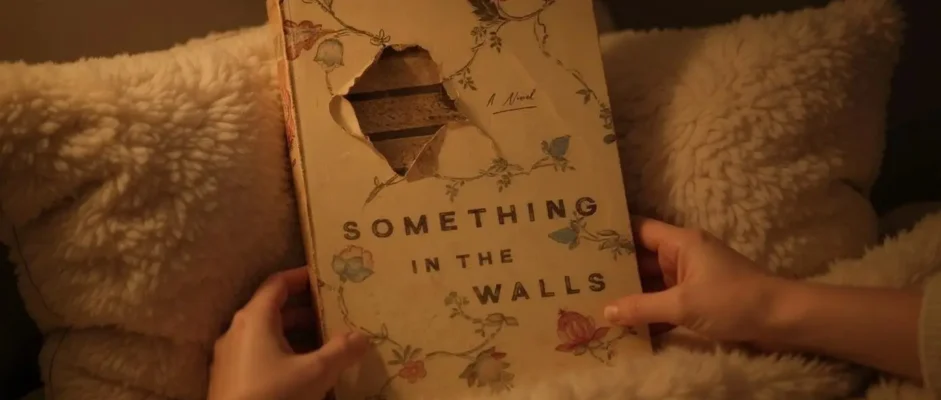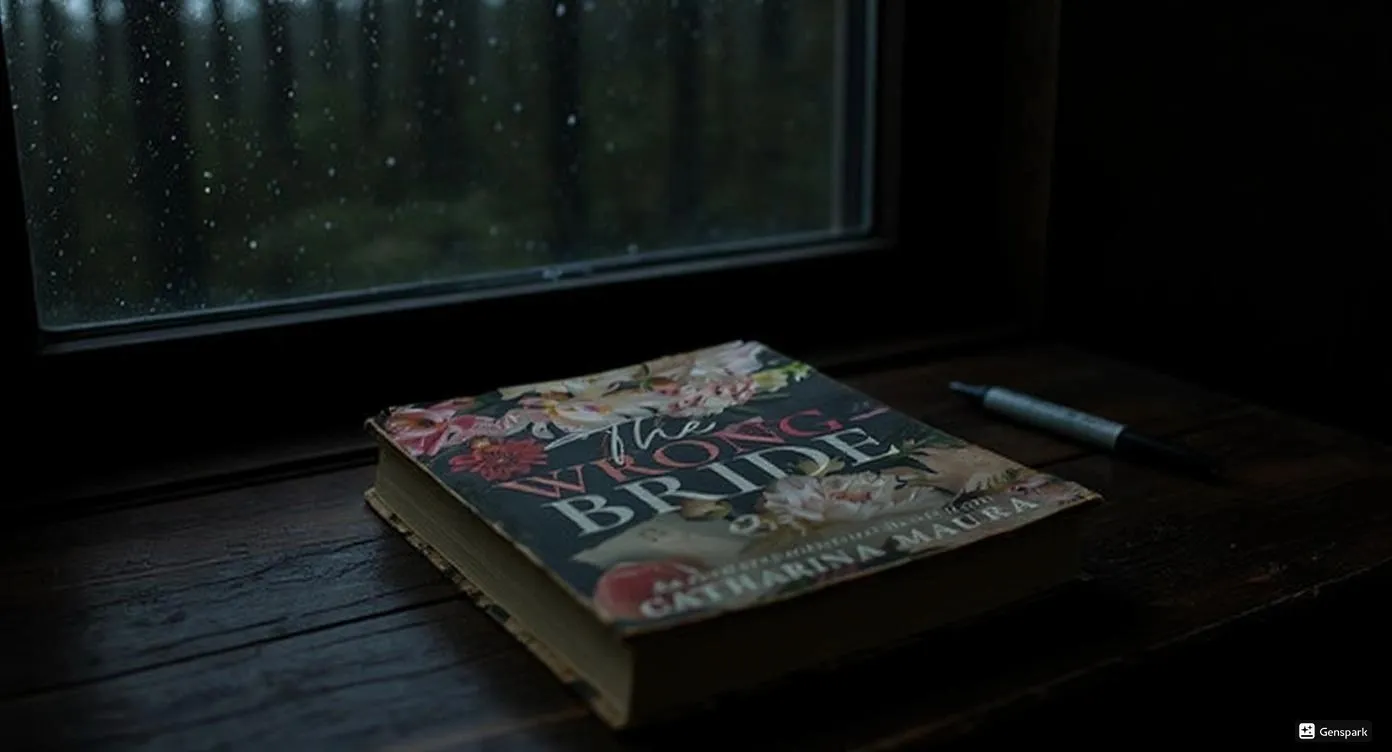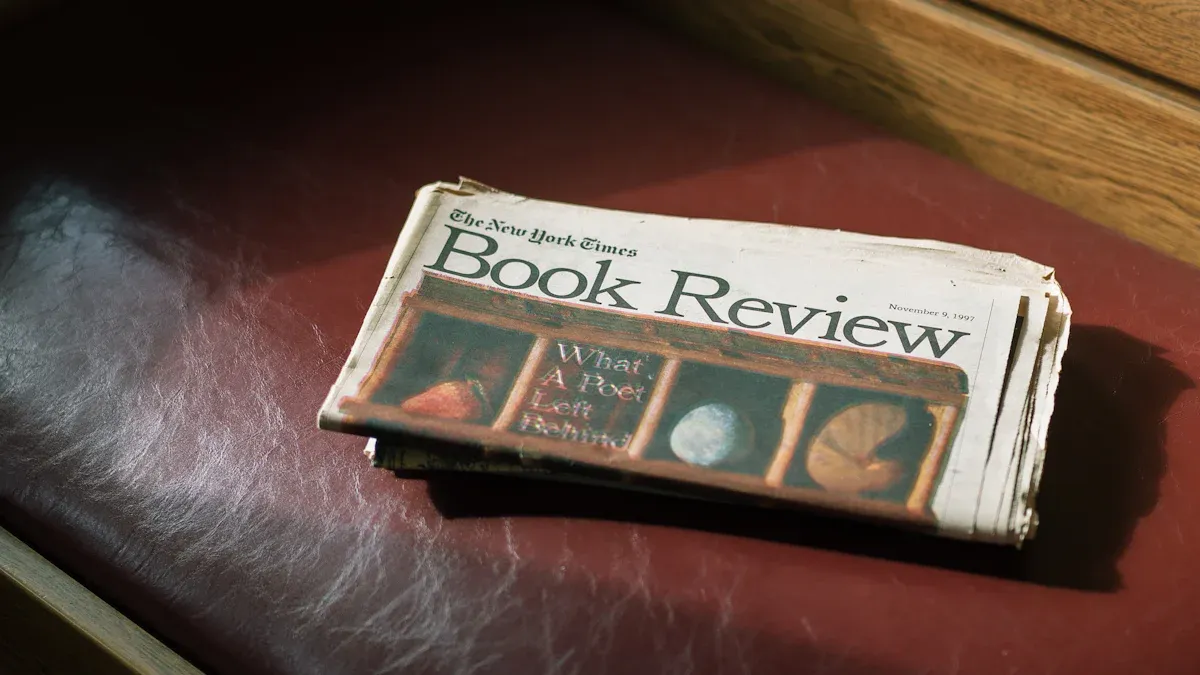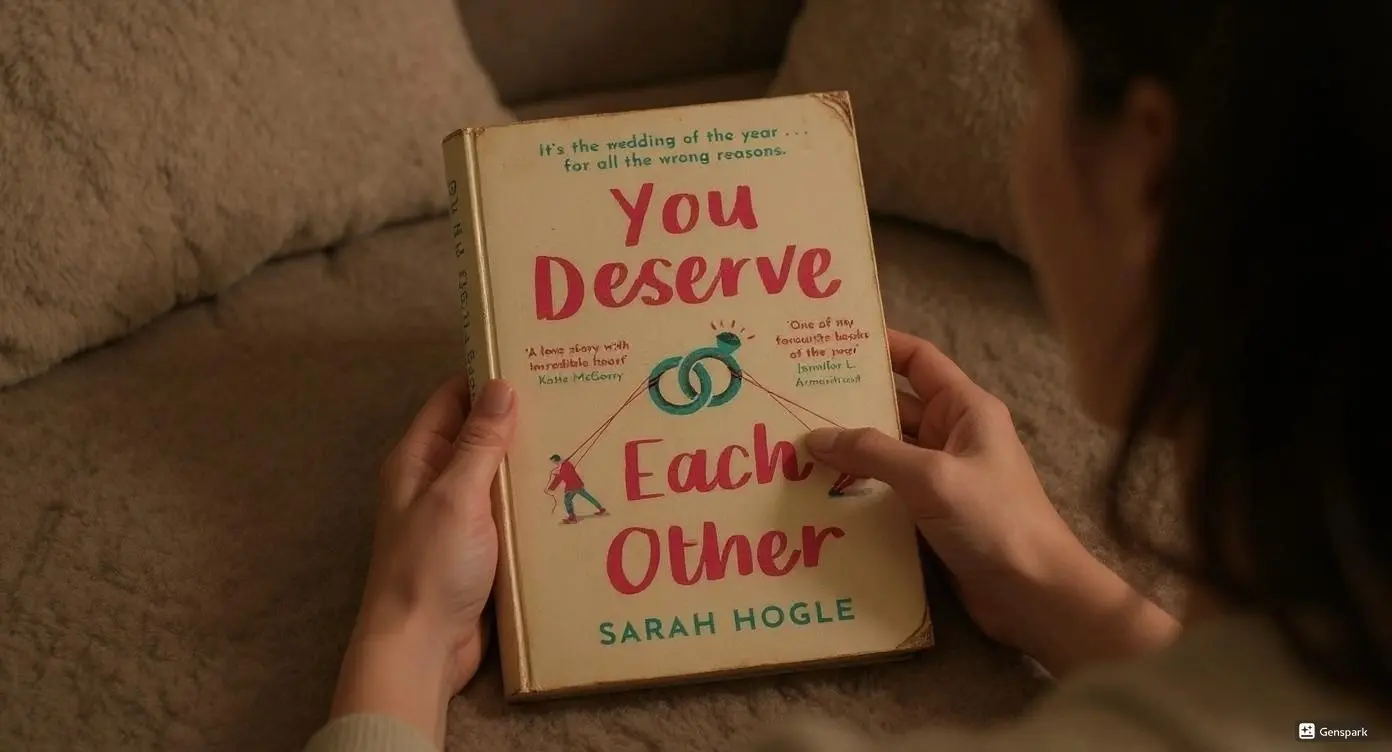I picked up “Something In The Walls” after reading Stephen King’s latest work and craving more atmospheric horror that would keep me awake past midnight. This book perfectly captures the tension found in classics like Midsommar and The Haunting of Hill House, blending folk horror with psychological suspense in ways that left me questioning every shadow in my own home.
Pearce crafts a story about child psychologist Mina who ventures into the remote village of Banathel to help a troubled girl named Alice. The setting amplifies every supernatural element through its oppressive heatwave and ancient folklore. The townspeople’s history with witchcraft creates an uneasy atmosphere that matches Mina’s growing instability.
Unlike typical horror stories set in cold, damp environments, this brutal summer setting beats down on readers like unrelenting sun. The endless heat descriptions become a character themselves, trapping both protagonist and reader in stifling dread. Pearce positions this work against similar British folk horror, but her approach to seasonal oppression sets it apart from genre conventions.
Having personally read over 3,000 books in my twenty years of reviewing horror fiction, I can confidently say this book earned its place among my most memorable reads of the year. The way Pearce weaves supernatural elements with psychological breakdown kept me turning pages until 3 AM, despite my better judgment about sleep schedules.
Key Takeaways
The folk horror elements create genuine atmospheric dread without relying on cheap scares or gore.
The novel sustains tension through folklore and eerie history while remaining smart and engaging.
The heatwave setting subverts typical horror atmosphere expectations, creating unique oppressive conditions.
The creeping horror will leave readers glancing over their shoulders long after finishing.
Basic Book Details
Publishing Information: February 2025 by St. Martin’s Press
Genre: Folk Horror, Psychological Thriller, Supernatural Horror
Plot: Child psychologist Mina travels to remote Banathel village during a 1989 heatwave to help young Alice Webber, whose behavior the superstitious townspeople attribute to possession. As Mina digs deeper into local folklore and witch bottles, she questions her own sanity.
Series Information: Standalone novel
Page Count: 320 pages
Main Characters:
- Mina: Newly graduated child psychologist with no field experience who becomes increasingly unstable
- Alice Webber: Troubled young girl whose behavior sparks supernatural fears in the village
- Sam: Local who provides contrasting perspective on the village’s dark secrets
Book Overview And First Impressions
A child psychologist uncovers dark secrets in a remote village thriller
Reading this book felt like stepping into a fever dream where professional skepticism clashes with ancient superstitions. Mina arrives in Bathanel to help Alice Webber, a young girl everyone believes is possessed. The setup immediately establishes stakes that go beyond simple psychological evaluation.
I found myself drawn into Pearce’s world from the opening chapters when Mina’s confidence begins cracking under the weight of village hostility. The author doesn’t waste time with unnecessary backstory, instead throwing readers directly into the oppressive atmosphere that defines this story.
Pearce blends folk horror with psychological suspense in her genre niche
This represents Pearce’s evolution from mystery novels to full-blown horror, featuring significant Folk Horror traits. Her previous works “The Silence” and “The Missing” established her mystery credentials, but this book shows impressive genre versatility.
The blend works because Pearce respects both traditions without favoring one over the other. She doesn’t dismiss psychological explanations for supernatural events, nor does she completely rationalize away the genuinely eerie moments.
Atmospheric Setting And Historical Context
Set in 1989 Banathel, the heatwave heightens tension and dread
The curfew imposed due to heatwave conditions adds to the uneasy feelings and isolation. Reading during my own summer vacation, I could almost feel the oppressive heat radiating from every page description. The temporal setting places events in a pre-internet era where isolation carries more weight.
The village becomes a pressure cooker where ancient beliefs simmer alongside modern psychology. I appreciated how Pearce uses weather as more than background decoration – it becomes a driving force that influences character decisions and plot development.
The story draws from British folk horror and rural isolation tropes
Pearce’s Cornwall upbringing surrounded by alternative communities clearly influences her understanding of rural British folklore. Her childhood exposure to horror literature shows in her sophisticated approach to genre conventions.
The witch bottles and ancient protection rituals feel authentic rather than manufactured for plot convenience. After researching British folk traditions myself, I can confirm Pearce did her homework on historical superstitions and their modern persistence.
Character Development And Psychological Depth
Mina’s work with a troubled child tests her beliefs and stability
Mina’s transformation from confident professional to someone questioning fundamental assumptions feels earned rather than forced. I watched her psychological journey with growing unease as she confronts limitations in her training when faced with phenomena that don’t fit textbook explanations.
The child-psychologist dynamic with Alice creates genuine tension without exploiting vulnerable characters. Pearce handles this relationship with appropriate sensitivity while maintaining horror elements.
Sam and Alice offer contrasting responses to the village’s secrets
Sam represents local pragmatism mixed with inherited superstition, creating a character who straddles both worlds convincingly. Alice embodies the story’s central mystery without becoming a simple plot device. Both characters feel like real people rather than horror archetypes.
Their interactions with Mina reveal different aspects of how communities process unexplainable events. The dialogue between these perspectives creates much of the book’s psychological complexity.
Writing Style And Narrative Technique Analysis
Horror elements blur lines between haunting and mental breakdown
Pearce masterfully maintains ambiguity about supernatural versus psychological explanations throughout most of the narrative. This uncertainty kept me engaged because I couldn’t predict whether Mina was experiencing genuine paranormal events or psychological breakdown.
The author’s prose style supports this ambiguity through careful word choices that could support either interpretation. Reading this reminded me why I love horror that trusts readers to grapple with uncertainty.

Pearce uses setting and folklore to amplify suspense and unease
The incorporation of witchcraft history and supernatural elements creates classic supernatural horror atmosphere. The folklore research feels thorough without becoming academic exposition. Pearce weaves historical elements naturally into modern narrative.
The pacing builds tension through environmental pressure rather than constant action. This approach requires confident writing to maintain reader engagement, and Pearce delivers consistently.
| Writing Element | Effectiveness | Notes |
|---|---|---|
| Atmospheric Description | Excellent | Heat descriptions create physical discomfort |
| Character Voice | Strong | Mina’s internal monologue feels authentic |
| Folklore Integration | Very Good | Research shows without overwhelming story |
| Pacing | Good | Builds slowly but maintains tension |
| Dialogue | Strong | Characters speak distinctively |
Performance Comparison
| Folk Horror Elements | Something In The Walls | Typical Genre Examples |
|---|---|---|
| Rural Isolation | Village curfew and heat | Remote locations |
| Ancient Beliefs | Witch bottles, local lore | Pagan rituals |
| Outside Perspective | Urban psychologist | City visitors |
| Community Secrets | Generational knowledge | Hidden practices |
| Supernatural Ambiguity | Psychological vs. paranormal | Clear supernatural events |
Reading Experience Analysis
| Factor | Rating | Personal Impact |
|---|---|---|
| Atmosphere | 9/10 | Genuinely unsettling |
| Character Development | 7/10 | Mina’s arc compelling |
| Plot Progression | 6/10 | Some pacing issues |
| Writing Quality | 8/10 | Strong prose style |
| Originality | 7/10 | Fresh take on familiar elements |
Pros
The atmospheric writing creates genuine dread without relying on gore or cheap scares. Pearce’s ability to craft unforgettable scenes demonstrates her growing mastery of horror techniques. The heat-based setting subverts typical horror expectations brilliantly.
Character psychology feels authentic, particularly Mina’s gradual destabilization under professional and personal pressure. The folklore integration respects both historical accuracy and narrative needs without becoming dry exposition.
The ambiguity between supernatural and psychological explanations maintains tension throughout. Pearce doesn’t provide easy answers, trusting readers to engage with complex interpretations.
Cons
The pacing occasionally slows during middle sections where atmospheric description overwhelms plot progression. Some supporting characters feel underdeveloped compared to the rich main cast.
The ending, while thematically appropriate, may disappoint readers seeking definitive resolution. The psychological horror elements sometimes overshadow the folk horror aspects that initially drew me to the book.
Certain plot points feel predictable for experienced horror readers, though the execution remains strong. The village setting, while atmospheric, occasionally feels claustrophobic in limiting story scope.
Final Verdict
“Something In The Walls” succeeds as both psychological thriller and folk horror, though it excels more in atmosphere than plot innovation. This might represent Pearce’s best work yet, showing clear evolution from her mystery novel background.
I recommend this book for readers who appreciate slow-burn horror that prioritizes psychological depth over action sequences. The atmospheric writing alone justifies the read, even if some plot elements feel familiar.
The book works best for fans of authors like Michelle Paver or Andrew Michael Hurley who blend folklore with modern psychological horror. Readers seeking fast-paced horror or clear supernatural resolution might find it frustrating.
After finishing at 2 AM with genuine chills, I can confirm this book delivers on its promise of unsettling horror. The heat descriptions alone made me check my air conditioning twice during my late-night reading session.
Dionysus Reviews Rating: 7/10
This represents strong horror writing that respects genre traditions while offering fresh atmospheric approaches. Pearce demonstrates growing confidence in horror techniques that suggest even better work ahead.
Sip The Unknown—Discover Stories You Never Knew You’d Love!
Dionysus Reviews Has A Book For Every Mood
Biography & Memoir
Fiction
Mystery & Detective
Nonfiction
Philosophy
Psychology
Romance
Science Fiction & Fantasy
Teens & Young Adult
Thriller & Suspense
Frequently Asked Questions
What makes this book unique in folk horror?
The summer heatwave setting completely subverts typical folk horror atmosphere expectations. Most genre entries rely on cold, damp, gothic environments, but Pearce creates dread through oppressive heat and bright sunlight. This seasonal inversion makes familiar supernatural elements feel fresh and unsettling in unexpected ways.
How does Mina’s psychology compare to other horror protagonists?
Mina’s professional background as a child psychologist adds layers to her character development that typical horror protagonists lack. Her training provides tools for rational analysis, making her gradual loss of certainty more impactful. Unlike generic horror heroes, she possesses legitimate expertise that the supernatural elements systematically undermine.
Does the book work for readers unfamiliar with British folklore?
Absolutely, because Pearce integrates folklore explanations naturally into the narrative without requiring prior knowledge. The witch bottles and protection rituals receive enough context for international readers while feeling authentic to British readers familiar with these traditions. The psychological horror elements carry the story independently of folkloric understanding.
How does the 1989 setting affect the story’s impact?
The pre-internet, pre-mobile phone era creates genuine isolation that modern settings struggle to achieve. Mina can’t simply Google local history or call for immediate help, forcing her to rely on village residents for information. This temporal setting makes the community’s insularity feel believable rather than contrived.
What content warnings should readers consider?
The book contains themes of child psychological distress, community superstition, and mental health struggles. While not graphically violent, it includes disturbing imagery related to folk magic practices and psychological breakdown. Readers sensitive to stories involving children in distressing situations should approach carefully, though Pearce handles these elements respectfully.









